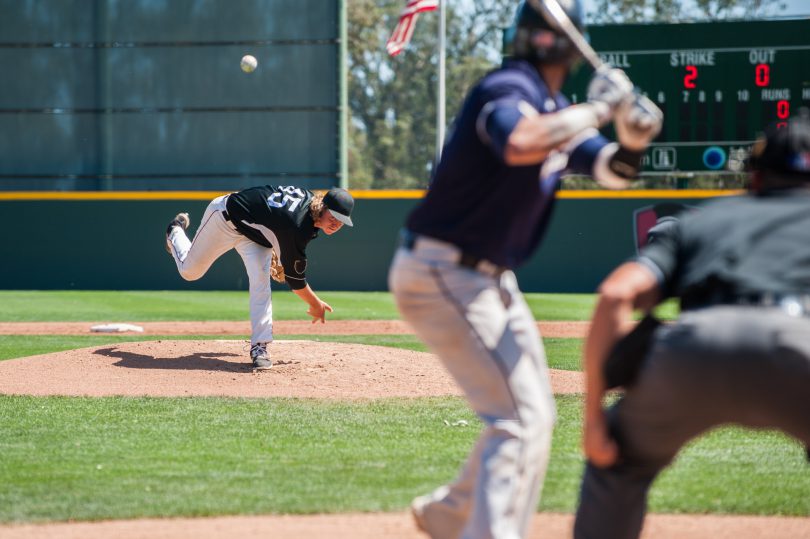When we ask high school players what level of college baseball they want to play, almost all of them say Division I. But did you know that DI baseball players make up less than 1/5 of all college baseball players? Did you know that the NCAA isn’t the only association for college baseball? 1700+ schools participate in intercollegiate baseball across 8+ divisions and you should take time to learn about the differing opportunities they provide!
As you start to narrow your college choices, it’s important for you to explore and understand all of the college baseball opportunities that are out there. It’s also important for you to understand the different requirements for each type of division or level of college baseball you might play, especially since the requirements may CHANGE with little notice. Be sure to check in with your school counselor at least once a year to stay on top of any rule changes that may impact you.
While many players chase D-1 prowess, few consider the implications of playing at the college game’s highest level. With increased opportunity, NIL, and publicity comes increased risk and pressure. College athletics at the highest level are a business. Winning takes priority and players who don’t perform are often sown the door. Contrast this to high academic D3 programs, where winning is important but far from the priority, and you have a range of very different college baseball experiences. We encourage you to learn about all the college baseball opportunities available and carefully consider what level fits best for your skills and goals.
Below, we recap the various levels and divisions of college baseball to help you kick start your research so you can see the differences.
NCAA Division I
What This Means: Division I schools have to offer 14 sports. They must sponsor at least two team sports for men and two for women. They must have men’s and women’s teams participating in the fall, winter, and spring seasons. They also have to play a minimum number of games against other DI programs. This is the most challenging level of college baseball, and each school is allowed to offer a total of 11.7 full baseball scholarships. The scholarship money may be divided among up to 32 players, so most scholarship offers are only a fraction of the total cost of attendance.
What They Require: Division I schools require that you complete 16 “core courses” within 8 semesters (4 years of English, 3 years of math, 2 years of science, and 2 years of social science; 1 more year of either English, math, or science; and additional courses each year from any of the categories, foreign language, or comparative religion or philosophy). These 16 classes have to be approved by NCAA. Don’t guess which classes are approved. Ask your counselor to make sure that the classes you have chosen are on the NCAA approved list and check for yourself on the eligibility website HERE. Ten of the courses have to be done before you start your senior year, and you won’t be able to retake them for better grades.
To be eligible to play D1 baseball as a freshman, you must have an NCAA Core GPA of 2.3 or higher (based on your core courses). NCAA uses a sliding scale based on Core GPA to determine the required test scores. See the NCAA eligibility website for specifics. But keep in mind that meeting this minimum may NOT qualify you to play at your top choice schools: their admissions requirements are likely to be higher. Check early and often with the NCAA, your counselor, and your top choice schools to make sure you are on track.
NCAA Division II
What This Means: Division II schools have to offer 10 sports, and coed schools have to have 4 sports for men and 4 for women. Division II schools play most often against schools in their regions, and they offer 9 full baseball scholarships, but these can be divided up among more than 9 players.
What They Require: Division II schools require 3 years of English, 2 years of math, and 2 years of science: 3 years of additional courses from English, math, or science; 2 years of social science; and 4 years of additional courses from any of the areas, foreign language, or comparative religion/philosophy. These 16 classes must be approved by the NCAA. Don’t guess about whether your classes are approved or not, ask your counselor or check for yourself HERE to make sure!
To be eligible to play Division II baseball as a freshman, you must have an NCAA Core GPA of 2.2 or higher. NCAA uses a sliding scale based on Core GPA to determine the required test scores. See the NCAA eligibility website for specifics. But keep in mind that meeting this minimum may NOT qualify you to play at your top choice schools: their admissions requirements are likely to be higher. Check early and often with the NCAA, your counselor, and your top choice schools to make sure you are on track.
Disclaimer: The NCAA changes its academic requirements often, so going directly to the NCAA eligibility website is always going to be your most accurate source of information.
NCAA Division III
What This Means: Division III is the largest division in NCAA. The focus for all students attending Division III schools is academics. They do not provide any athletic scholarships.
What They Require: Division III schools have no standard minimum requirements, either for grades or classes. BUT, that does not mean that getting into a Division III school is easy! It means that the requirements are set individually by the schools, and some of these requirements can be tough. Check the websites of the schools that interest you to find out what you need to do to get in.
NAIA
What This Means: The National Association of Intercollegiate Athletics was founded in 1937 and has nearly 300 member colleges and 60,000 athletes. NAIA schools offer 12 baseball scholarships that can be divided up among more than 12 players.
What They Require: The NAIA has its own eligibility center (http://www.playnaia.org/) to help you find out if you have met the minimum academic requirements to play. You must graduate from high school and meet two out of three of the following requirements: a minimum of 18 on the ACT or an 860 on the SAT (reading plus math scores only) and either be a graduate in the top half of your high school class or have a minimum of 2.0 GPA in high school.
NJCAA/Junior College
What This Means: National Junior College Athletic Association. There are three divisions in the NJCAA: Division I and II offer up to 24 scholarships and Division III junior colleges do not offer athletic scholarships. Some states, like California, have their own junior college baseball associations and you should make sure you understand the requirements and rules for the leagues that you are considering. Most (but not all) junior colleges have other scholarship and financial aid options for students. Be sure to find out what kind of support is available in your area.
What They Require: Most junior colleges allow any students who have graduated from high school or passed the GED to enroll in classes and be eligible to play baseball.
For more information on academic and eligibility requirements for the different divisions of college baseball, read our Eligibility 101 article by clicking HERE.







